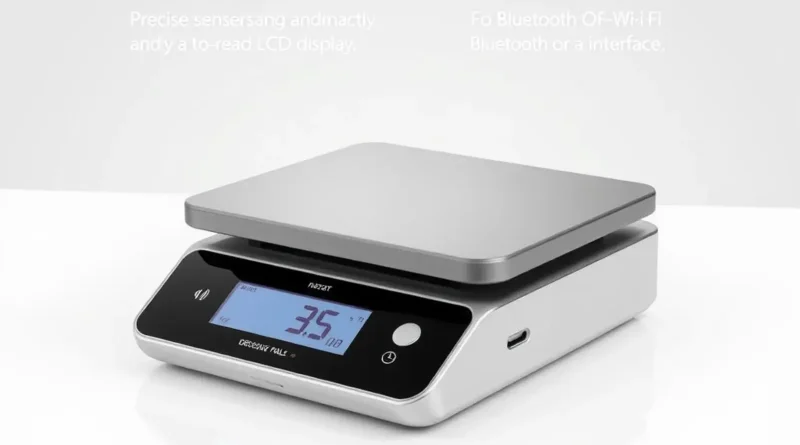Low-tech and Analog Solutions in High-Tech Environments: The Unlikely Secret to Better Work
The hum of servers is the white noise of the modern workplace. Screens glow on every desk, notifications ping, and software updates roll out in a silent, endless tide. In this world of pure digitality, it feels almost heretical to suggest a simpler path. But here’s the deal: the most forward-thinking companies are quietly embracing a counter-intuitive strategy. They’re weaving low-tech and analog tools back into their high-tech fabric.
And it’s not about nostalgia. It’s about performance. It’s the strategic use of a physical notebook, a whiteboard, or even a simple sticky note to solve problems that pure tech can’t quite crack. Let’s dive into why the analog resurgence is happening in the very places you’d least expect it.
Why Go Analog When You Have AI? The Cognitive Case
Our brains, frankly, aren’t computers. They’re messy, associative, and deeply physical. High-tech environments often demand a kind of abstract thinking that can leave us feeling… untethered. Analog tools provide that tether.
The Power of Physicality
Writing by hand, for instance, is a completely different cognitive experience than typing. It’s slower, which forces your brain to engage more deeply with the material. The physical act of forming letters and the spatial memory of where you wrote something on a page creates stronger neural pathways. That’s why you might forget a password you typed, but remember a concept you sketched out on a napkin.
Think of it like this: digital tools are for speed and distribution; analog tools are for understanding and creation. They’re two different gears, and you need both to drive innovation.
Combating Digital Fatigue and Distraction
Let’s be honest. Your laptop is a carnival of distractions. A single browser tab can hold your project plan, three news sites, and a shopping cart. This constant context-switching is a massive drain on deep work.
An analog workspace—a notebook, a printed document, a whiteboard—is a sanctuary of focus. It has one purpose. There are no pop-ups. No “ping!” sounds. This single-tasking environment is crucial for tackling complex problems and is a key component of any effective digital minimalism strategy for knowledge workers.
Analog in Action: Real-World Use Cases
Okay, so it sounds good in theory. But what does this actually look like in a tech-savvy office? Well, it’s everywhere if you know where to look.
The Mighty Whiteboard: Collaboration’s Best Friend
No digital collaboration tool, no matter how fancy, has quite matched the raw, democratic energy of a team gathered around a whiteboard. It’s immediate. There’s no learning curve. Everyone can grab a marker and contribute. The fluidity of erasing, drawing arrows, and sketching crazy ideas is… well, it’s magic. It fosters a level of spontaneous creativity that structured software often stifles.
Paper Notebooks for Problem-Solving
From the classic Moleskine to the bullet journal, paper notebooks are making a huge comeback. Developers use them to sketch out architecture. Product managers map user flows. The act of physically drawing boxes and lines can reveal flaws in logic that a perfect digital diagram might hide. It’s a form of tactile brainstorming for software teams that unlocks a different part of the brain.
Kanban Boards: From Factory Floor to Scrum Room
This is a perfect example of a low-tech, high-impact solution. The original Kanban system in Japanese factories used physical cards on a board to visualize workflow. This concept has been digitized a hundred times over (Trello, Jira, etc.), but many teams are reverting to the physical version for their daily stand-ups.
Why? Because a wall-sized board with sticky notes is impossible to ignore. It’s a constant, physical reminder of the team’s progress and bottlenecks. The act of moving a sticky note from “In Progress” to “Done” provides a tangible sense of accomplishment that a clicked checkbox just can’t match.
| Tool | Digital Alternative | Analog Advantage |
| Whiteboard | Miro, Mural | Ultra-low latency, zero learning curve, fosters spontaneous group interaction. |
| Paper Notebook | Evernote, Notion | Enhances memory retention, free from digital distractions, unlimited customizability. |
| Physical Kanban Board | Trello, Jira | Always-on visibility, provides tactile satisfaction, simplifies daily stand-ups. |
Striking the Right Balance: A Hybrid Approach
This isn’t a call to throw your laptops in the river. The goal isn’t to replace high-tech tools, but to augment them. The most productive environments are hybrid. They understand the strengths and weaknesses of both worlds.
So, how do you build a culture that embraces this? Here are a few ideas:
- Provide the tools. Stock rooms with high-quality whiteboards, abundant sticky notes, and good pens. Make them accessible and encouraged.
- Start meetings analog. For the first 10 minutes of a brainstorming session, ban laptops. Use paper and markers. Then, later, you can digitize the best ideas.
- Respect the deep work sanctuary. Encourage employees to have “analog hours” where they disconnect from notifications to work through complex problems on paper.
The key is intentionality. Use analog for ideation, deep focus, and collaborative energy. Use digital for organization, distribution, scaling, and automation. It’s about choosing the right tool for the job, not just the newest one.
The Human Element in a Digital World
Ultimately, this trend points to something deeper. As our work lives become more virtual, we crave tangible, human experiences. The smudge of ink on your finger, the squeak of a dry-erase marker, the satisfying flip of a page—these are small sensory details that ground us. They remind us that behind every line of code, every data stream, and every pixel, there’s a human being with a brain that works best when it’s connected to the physical world.
So the next time you’re stuck on a complex bug or can’t find the right words for a proposal, maybe step away from the screen. Pick up a pen. The solution might not be in the cloud, but right there, waiting on a clean sheet of paper.

